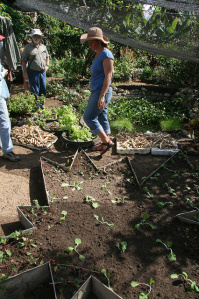The Power of Community
The Power of Community
Produced by The Community Solution (2006)
Film Review
The Power of Community is a documentary about Cuba’s “Special Period” in the early 1990s, following the political and economic collapse of the Soviet Union. The break-up of the USSR resulted in the virtual collapse of the Cuban’s economy owing to Castro’s dependence on Soviet oil. Not only did Cuba lose 80% of their oil imports, they also lost most of their food import when Bush senior enacted a trade embargo that penalized countries that raded with Cuba.
In contrast to the response of the industrialized world to the 2008 global meltdown, Cuba didn’t respond to the economic crisis by enacting austerity cuts. Instead they added free food to existing social services, which include free health care and and tertiary education. By implementing food rationing to prevent hoarding and speculation, successfully provided the entire population with 80% of their monthly food requirement.
Important Lessons for the Industrialized World
The filmmakers believe Cuba’s resilience in weathering the collapse of their fossil fuel economy offers important lessons for the developed world as they confront dwindling fossil fuel resources. The Power of Community begins by explaining Peak Oil and oil engineer M.K. Hubbert’s prediction that oil, gas, and coal resources would cease to be abundant and plentiful in the 21st century. It goes on to describe the effect of the loss of cheap energy and food during the Special Period.Between 1992-94, the average Cuban lost 20 pounds and pregnant women and children under five began showing signs of malnutrition.
The most immediate response was from the Cuban people themselves, as city dwellers reclaimed every available patch of vacant land. The government, in turn, began offering rent and tax-free tenancy on government land to individuals and cooperatives willing to produce food. To compensate for the loss tractors and fossil-fuel based fertilizers, pesticides, and herbicides, Castro government also engaged Australian permaculture specialists to organize extensive country-wide training in organic farming techniques.
Transformation on a Massive Scale
Recovery of essential soil microorganisms killed by industrial pesticides takes approximately 3-5 years. During this transition period, the entire Cuban society underwent transformation, as cars, busses, and tractors were replaced with a million Chinese bicycles, horses, mules, oxen and human laborers. As farmers’ incomes rose, there was also a major population shift from cities to the countryside. A side benefit was the drop in diabetes and cardiovascular disease as Cubans began exercising more and increased their dietary intake of fresh vegetables.
To maintain their electrical grid, Cuba revamped their power plants to burn their low quality domestic crude oil and converted their sugar refineries to biomass power plants. In the 5% of the country that remains off grid, wind energy, hydropower, and solar photo voltaic cells supply power to schools, clinics and hospitals.
Intangible Benefits of Cuba’s Organic Revolution
The Cubans interviewed in The Power of Community view the transition as enormously positive. The close cooperation required to meet basic survival needs has reinvigorated old community ties that were destroyed by industrialization. They are also proud of the new political independence food and energy self-sufficiency has brought.
photo credit: cheeses via photopin cc


The Most Revolutionary Act
- Stuart Jeanne Bramhall's profile
- 11 followers




